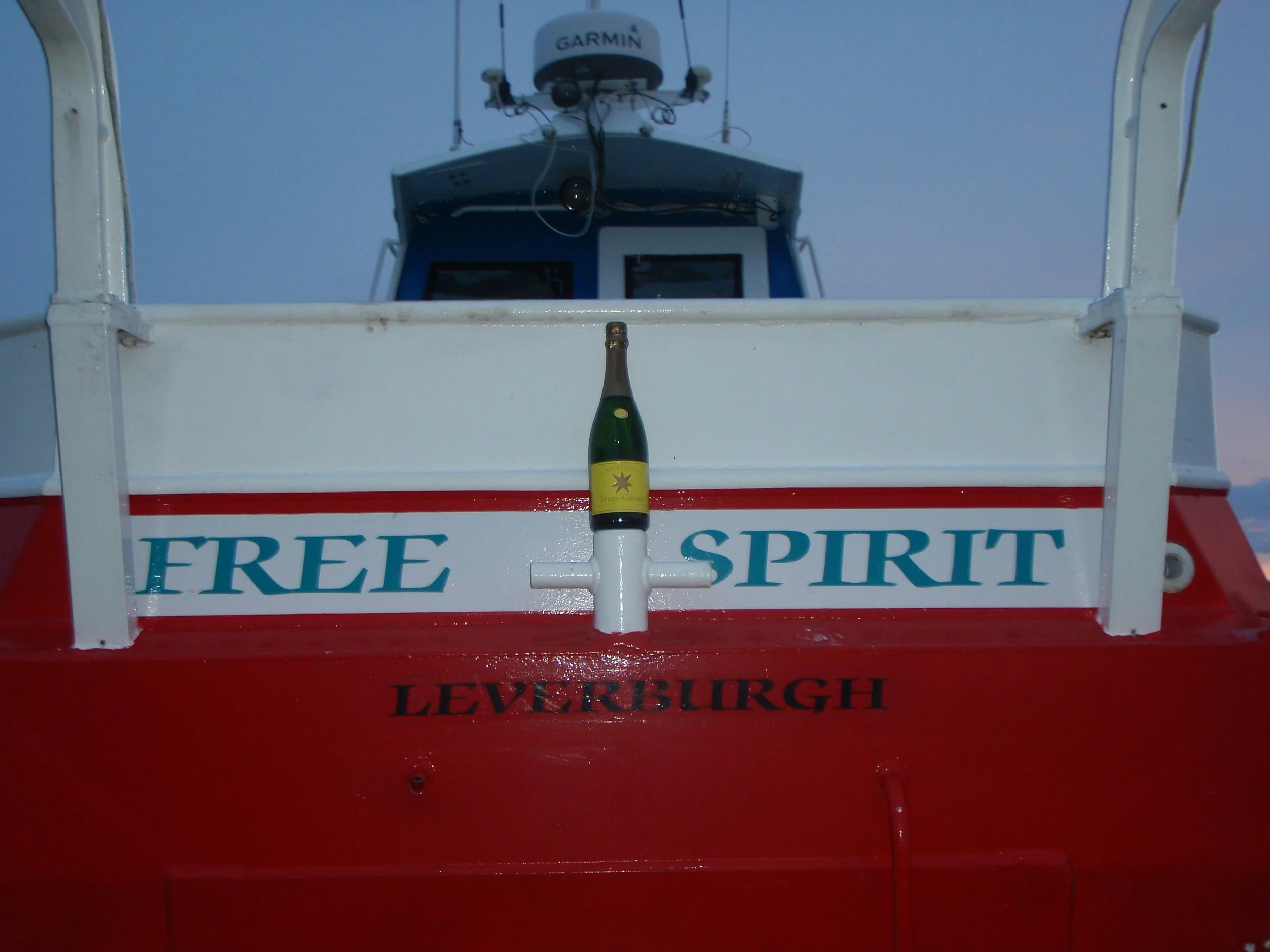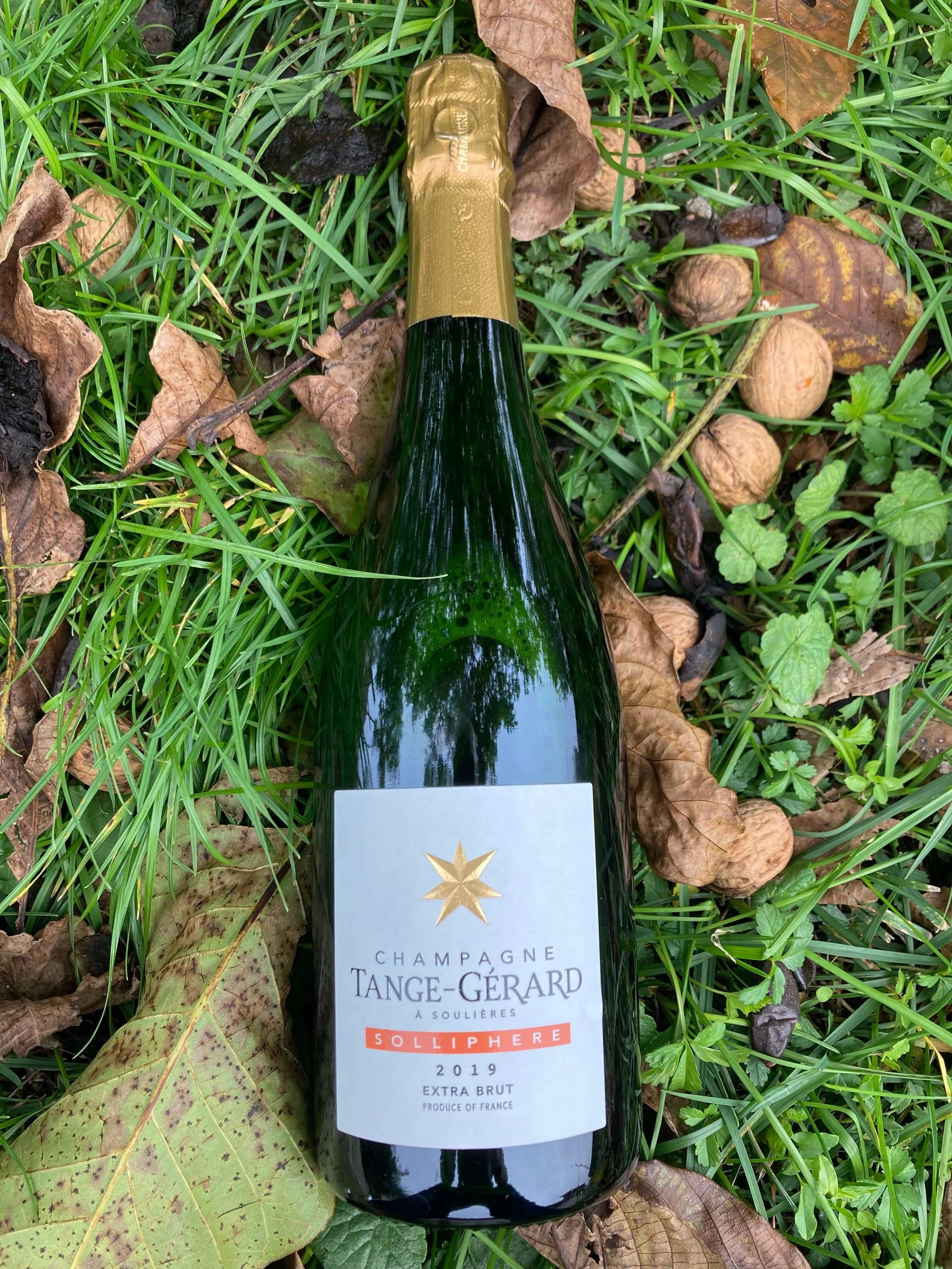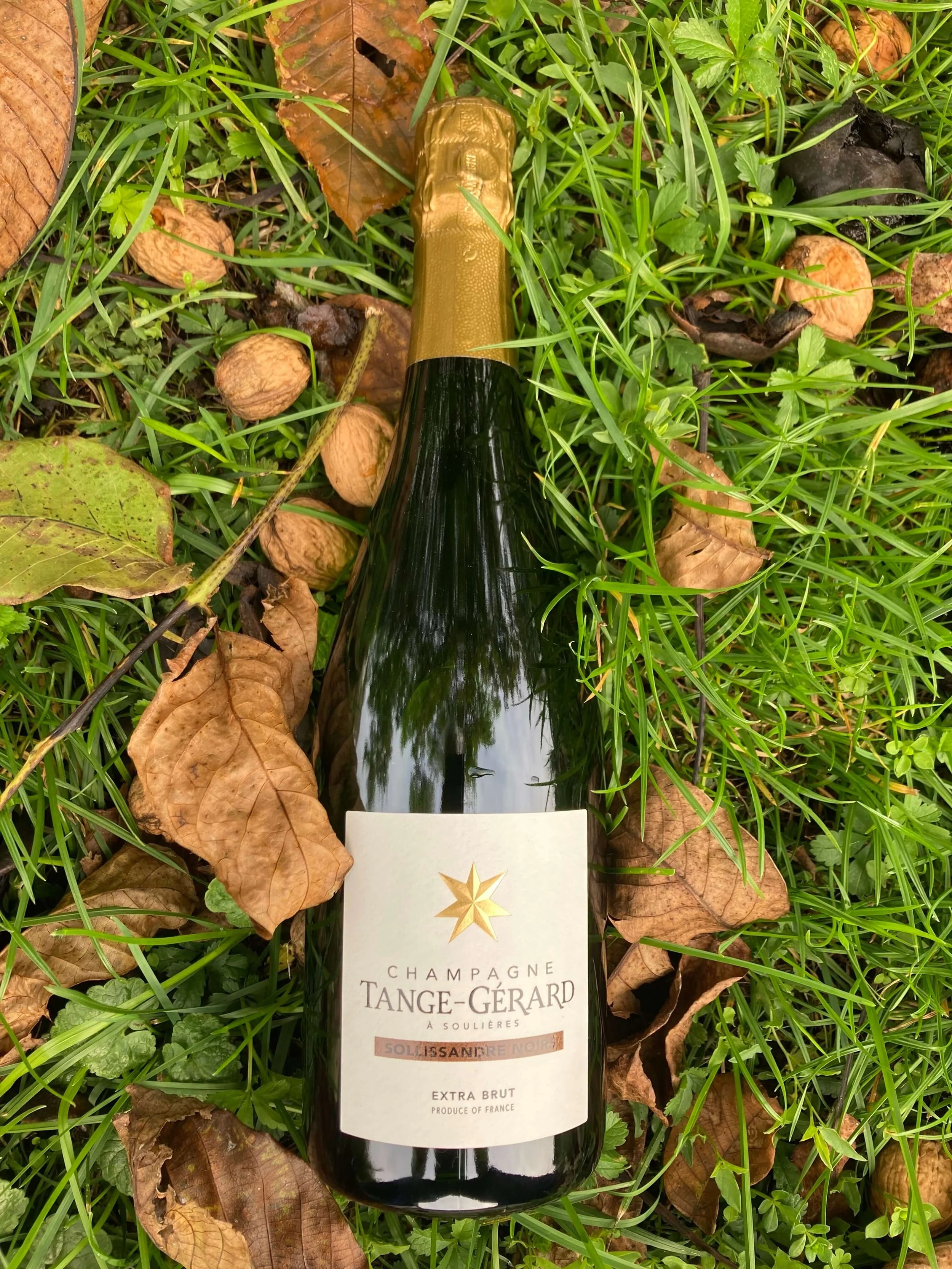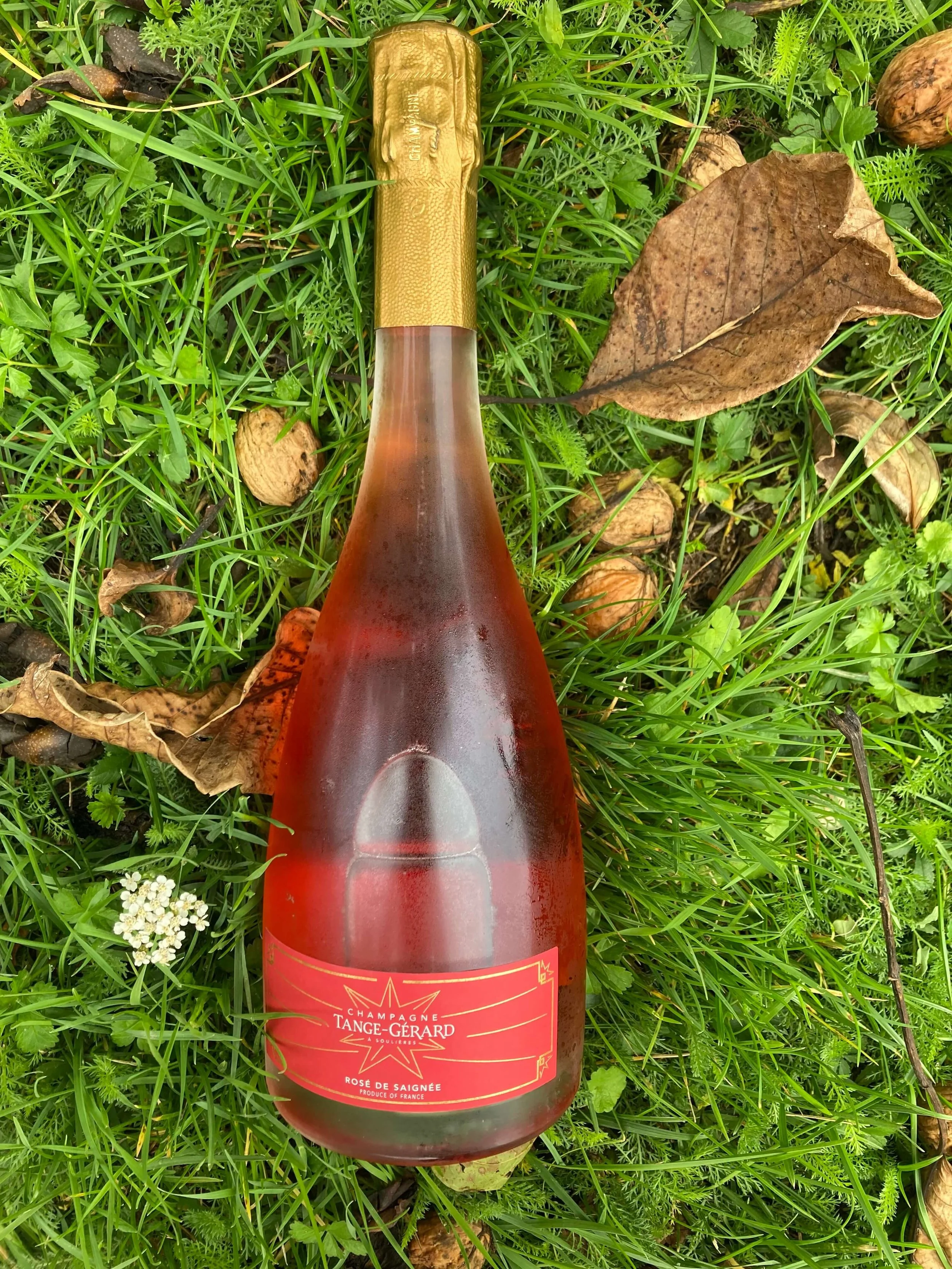champagne combinations
efterår-autumn-automne-herbst-autunno
The assortment of Tange-Gerard champagnes is wide. You may choose between white or rosé champagnes, a grape blend of mainly Chardonnay or Pinot grapes, vintage or not, single plot or blend of plots in the bottle. Your choice them to find the great match for your reception, candlelight dinner or as your perfect aperitif.
Maybe you appreciate a bit to accompany the bubbles? An easy one is always welcome in Soulieres and even better when it reflects the season around us.
Champagne in your pretty glasses bring the spirits to the next level in any gathering from the pop of the first bottle.
welcome and starter: vegetarian or anything that swim?
maincourse: veggies, fish or meat?
Roasted root veggies
Carrots, celery, parsnip, redbeet, fennel, red onion, pumpkin, potatoes roasted in the oven with a bit of olive oil and may spices then maybe turned around with a bit of garlic and herbs before serving.
Risotto forestière
The French word “forestière” means from the forest but it points at one ingredient only: mushrooms. Try them in a risotto and enjoy how Sollissandre Blancs and the melted, creamy parmesan partner perfectly.
sweet and salty: keen on dessert or rather cheese?
A cheese bite for your bubbles
Sollissandre Noirs can match cheeses of some taste. Try Petit Basque, made of sheep milk, or a cow milk Morbier with its distinctive layer of ashes in the middle.
Tarte Amandine
Pears in plenty. Slice them beautifully and arrange on a shortcrust pastry, covered with flour of almonds to suck up any surplus juice. Combine with the sweeter Tradition Demisec champagne.
Mont d’Or
Mont d’Or is maybe an acquaintance of yours from your ski trip in the French Alps? At home you warm the cheese in the oven or on top of your woodburner if you have one. Serve with good bread like in France.
Abundance of the orchard
Fallen apples and pears in abundance are likely to finish as compote. An autumnal crumble under a light roof of almond and butter-crumbs is another fast go-to choice of ours. Match it with Tradition Demisec.
apéro : hygge à la champenoise
Our most precious moments are the ones when we go exploring. We do that most when we relax. For example, after work at home or in places where others take care of things: in town, at the bar, when visiting.
This exploration, the business of exploring is to look for something new, that we didn’t know before.
Perhaps we need to get to know a new vintage? How does the new bottle resemble the old one? How do the vintages differ? How does the same champagne taste in different glasses? And what about different champagnes in the same glass?
The art lies in putting our senses at play. It’s a game that never has to end. We practise finding the words for what was just on the tip of our tongue.
We also find it exciting to taste our champagnes together with all sorts of things you can serve for that special part of the meal where champagne is unbeatable: the apéro.
The aperitif is an art form in Champagne. This is our way:
You need the relaxed company of good people with the champagne. While you exchange the latest news, you nibble tasty little bites with your fingers. Olives, cheese bites, cod roe, pesto, bite-sized vegetables, a slice of savoury tart, savoury choux pastries — and then perhaps just one more glass?
In Champagne the concept is so popular that it can be expanded to become the meal itself. It only requires even more bites, and is then called an apéro dinatoire.
Each season you can find some of our good, simple combinations on this page. At our place we love to combine what we find in the garden: nettles, roots, berries, walnuts in the pesto. It’s wonderfully fresh and right at hand, which is practical in the countryside.
Our only rule is that the combination must bring out the best in the champagne. That game also never ends. Alain long ago named the concept hygge à la champenoise.
What is your guilty pleasure and hidden trick? We’d love to hear from you.

the charisma of the bubbles
I began to ask Alain what he and all the others were actually doing out there in the vineyards day after day. As I began to work in the vineyards myself, this gave me a working community with many people with whom I otherwise do not share many experiences.
I started to notice Champagne’s double dynamic. It drew me in.
The exquisite elegance of the Champagne houses occupies one end of the spectrum. At the opposite end lies the winemakers’ solid connection to their terroir, with a very traditional approach: for many, anything beyond the next bend in the country road seems as alien as green cheese from the Moon. But to an outsider, one more often sees winemakers who are all doing virtually the same thing.
Champagne also has its temples. Especially in Reims and Épernay, but they can also be found throughout the region’s many small towns. Large, fine houses with special rituals, performed by high priests whose rank carefully — and far from randomly — corresponds to that of the guest.
The suits are impeccably stylish from top to bottom in a Champagne house, but only VIP guests have their crystal glasses filled by the house director or cellar master. It is a truly special experience when these gentlemen of Champagne open bottles and pour with impressive precision. This elegance heightens the joy of anticipation by a few more notches. The moment gains a solemn touch, as it should, when even the special is made extraordinary.
The atmosphere in the villages and small towns, there where the grapes come from, is distinctly rural. They have their hôtels particuliers —stately villas built with champagne money — but they also have tractor tracks on the roads, a midday closure between 12 and 2PM, and women in patterned smocks and men in green overalls watching life go by from their bench in the sunny side of the street. These people do not possess learned, elegant manners, yet they serve guests the house’s champagne with a natural pride that is no less than that of the grand Champagne houses.
They know well how special their champagne is. Everyone knows how special champagne is. Even those who do not drink it. Even those who do not like it know it. Champagne’s image is far greater than the wine itself—a drink for the magical moment, the extraordinary.
A “champagne moment” is what such an occasion is called in English, whether there is champagne involved or not. If anything, it’s a concept that reinforces the brilliant image that the lighthouses of the champagne industry have skillfully and diligently built over several hundred years.
Champagne has had its place wherever there was money and prestige since the early 18th century. Its men and women have, for 300 years, managed to keep the right customers interested by making an irresistible wine. But they have also skillfully marketed the bubbles from the very beginning.
Anyone who enjoys a bottle of champagne also gets its image—with all its lightness, joy, and glamour—along with it. Everything you desire must be found in the brief moment when the bubbles rise to the surface, heading toward infinity.
Such is the special charisma of champagne.
(Excerpt from book manuscript: Solveig Tange, 2008), all rights reserved
Thanks to all of you who kindly painted or sent us pictures: Hanne Toulouse (Atelier H, Reims), Frederik & Maria (Paris/Copenhagen), Jeanette Brockdorff (Holbæk),
Anne Bastholm & Sofus Clementsen (formerly Restaurant Valby, now Lolland), Hanne Tange (Århus/Isle of Skye).











